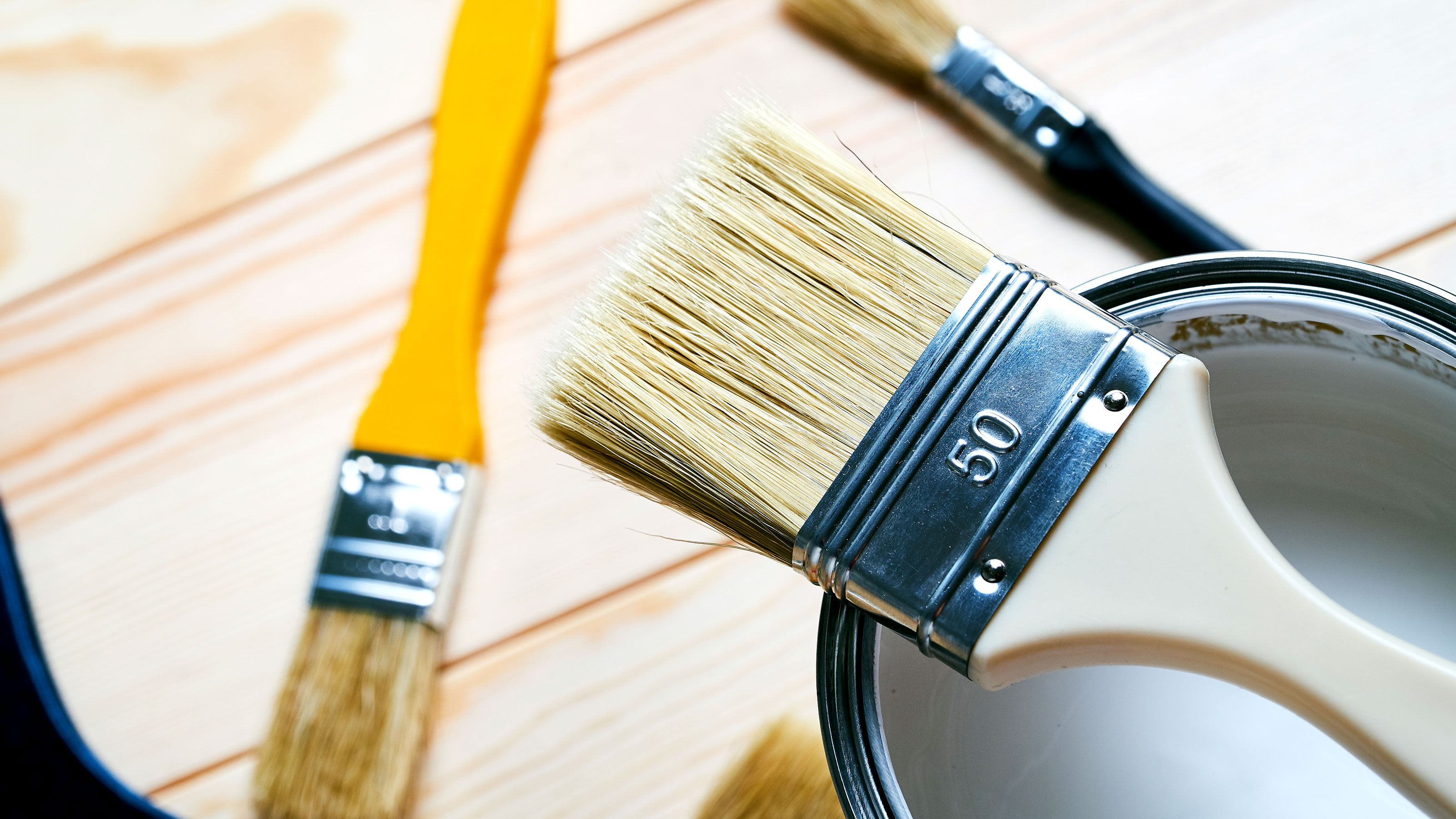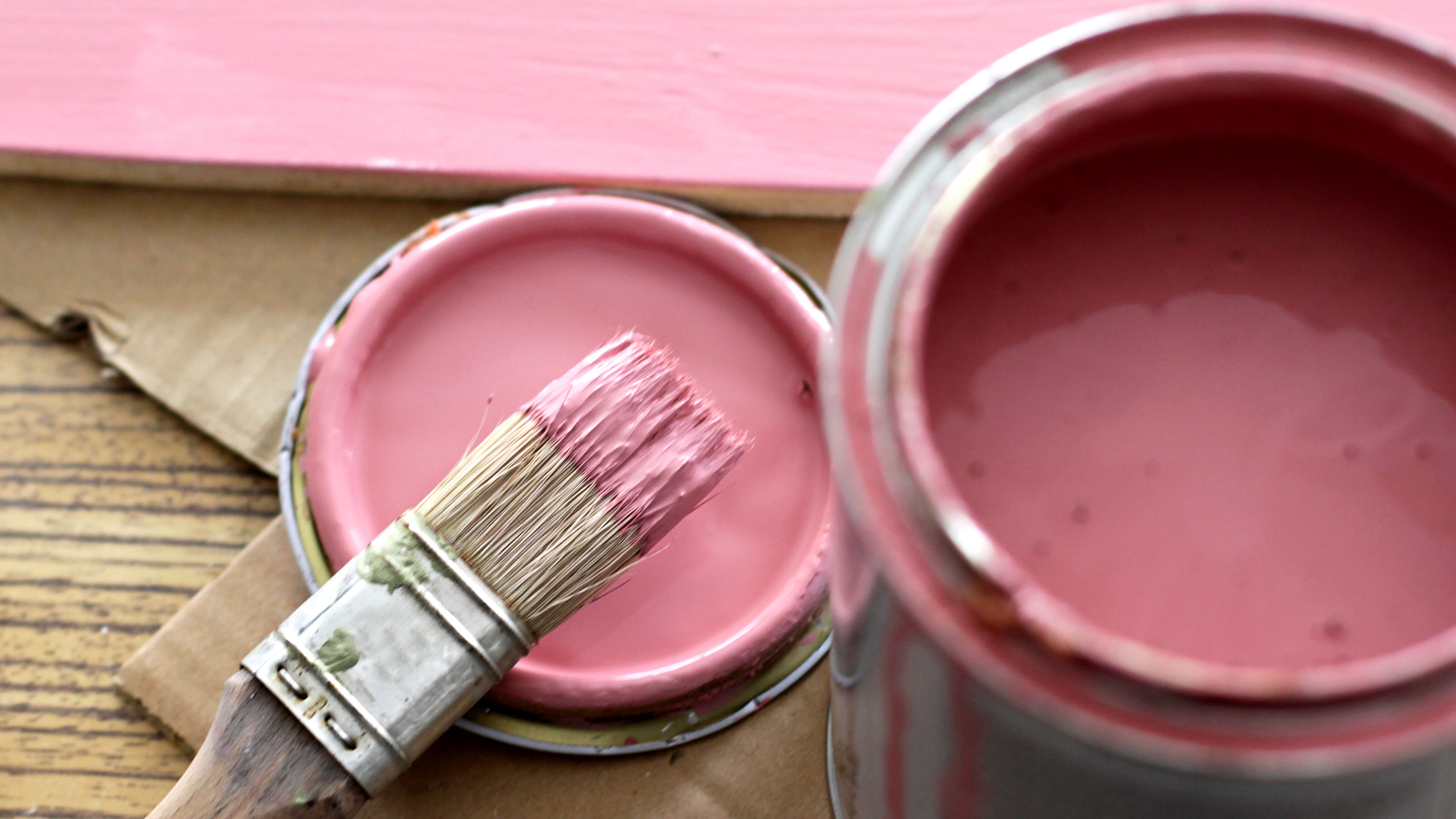Why storing paint in your shed is a bad idea
Storing paint the right way is essential to its longevity. Here we look at how and where you should keep your paint so it will last for years

Storing paint ready for your next project may seem like a simple decision, but get it wrong and it will cost you. If your paint gets too hot or too cold it will break down and become useless, meaning you will need to splash out on a new tin of paint to finish your latest paint project.
While you might know how to paint a room do you know where you need to store your paint when finished? A shed or garage seems like an obvious choice, but it's not for long term storage.
Here we delve into where you should consider keeping your paint and what conditions it needs to stay stable and ready for your next paint job.
Why storing paint outside isn’t a good idea
Paint cans can be messy and bulky and you don’t want any paint spills happening indoors, so storing them in your shed or garage seems like a logical and practical choice.
But, unless you are going to use it again very soon - we are talking hours and days here, not weeks and months – it’s not a good idea as Olivia Hunter, DIY expert at Wallpaper It explains, “While it might be tempting to store paint in the garage or shed, paint is best stored at constant temperature, away from sunlight and cold temperatures. Paint should be creamy and smooth but if exposed to heat or cold temperatures, paint can curdle or dry out.”
What is the best way to store paint?
To keep paint at its best you need to store it somewhere that offers a consistent temperature ideally between 15-25 C degrees and out of strong light. So where is a good place to keep your paint? Hunter suggests, “Store in a dark cupboard in the house or under the stairs. As we move into warmer weather, make sure the location where your paint is stored remains the same temperature, otherwise you might need to think about moving it.”
If you are storing new paint in the right conditions, it could last up to ten years. However, if the lid gets damaged and loses its airtightness then you will need to transfer the paint to another container to store it. You can purchase empty paint tins like these UltraBODY Empty Paint Cans on Amazon or large glass jars with screw on lids like these Bormioli Rocco Food Preserve Jars from Amazon.
How do you keep paint from drying out in the can?
New paint comes in an airtight container with a crisp clean tight fitting lid that helps it stay fresh and ready for action. Storing your paint properly goes a long way to keeping it in prime condition. But, once you have cracked open the seal you need to make sure the lid fits tightly.
To keep the lid in good condition – so it stays tight - you need to know how to open a paint can properly. You can use a large flat head screwdriver, but there are better options as Hunter explains, “One common mistake that is made when it comes to storing your decorating tools is opening paint cans with a screwdriver. This damages the lid and prevents the can from resealing correctly, causing air to get in which can lead to the paint drying out or lumping. To avoid this, we would always recommend using a paint key to open the can safely, enabling it to reseal tightly.”
A paint key – also known as a paint tin opener like the ProDec Universal Paint Tin Can Opener from Amazon – is a tool specially designed to open paint tins without damaging the lid and rim.
Another tip is to help keep the lid air tight is to clean off any excess paint on the lid or rim before replacing the lid. Use a paint brush to remove as much paint as possible from the rim and lid before getting a cloth to wipe off the remaining paint.

How long does paint last in a tin once opened?
This will depend on the type of paint i.e. is it water based or oil-based, how tight the seal on the lid is and how it's stored. As a general rule you should expect emulsion paint to last for at least a year if stored properly, but it can last longer. Check out our Does emulsion go off? guide for more insight on storing emulsion and its lifespan.
Gloss, satin and similar paints typically last longer may be up to 5 years, but this again depends on where and how the paint is stored. If an oil-based paint is not sealed properly a thick skin will form on the surface of the paint. One tip to help prolong the paint and help stop the skin forming is to lay a layer of clingfilm on top of the paint before you put on the lid.
The real test is to give the paint a visual check and try it. If it looks lumpy or discoloured, or even smells off, give it a mix and test on a small area. But it is unlikely to be any good. If you do need to get rid of it make sure you check our How to dispose of paint guide for tips on environmentally-friendly and responsible methods of disposal.
Get the Homebuilding & Renovating Newsletter
Bring your dream home to life with expert advice, how to guides and design inspiration. Sign up for our newsletter and get two free tickets to a Homebuilding & Renovating Show near you.
Steve Jenkins is a freelance content creator with over two decades of experience working in digital and print and was previously the DIY content editor for Homebuilding & Renovating.
He is a keen DIYer with over 20 years of experience in transforming and renovating the many homes he has lived in. He specialises in painting and decorating, but has a wide range of skills gleaned from working in the building trade for around 10 years and spending time at night school learning how to plaster and plumb.
He has fitted kitchens, tiled bathrooms and kitchens, laid many floors, built partition walls, plastered walls, plumbed in bathrooms, worked on loft conversions and much more. And when he's not sure how to tackle a DIY project he has a wide network of friends – including plumbers, gas engineers, tilers, carpenters, painters and decorators, electricians and builders – in the trade to call upon.

